How to Apply Times of India for Book Review

Sumi Madhok
If the challenge is that of 'theorizing from the global south' (p. fifty), so the question to inquire is, to what extent has the author of this volume been successful in meeting this call. Madhok'southward interest in offer united states of america an empirical account of 'subaltern struggles and contestations over rights' (p. 2) from South asia is to bring to our detect the conceptual vocabulary used in these struggles, pointing to a dissimilar notion of human rights.
Reviewed by: Shefali Jha
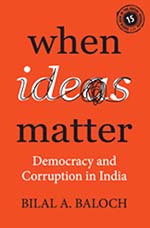
Bilal A. Baloch
In his debut volume, When Ideas Matter: Democracy and Corruption in India, Bilal A Baloch seeks to underscore the salience of credo in shaping, dictating, and motivating the political aristocracy'due south behaviour. Political analysts have conventionally focused on fabric motivations backside elite political behaviour during the course of an electoral bicycle. Still, to what extent executive action is determined by ideational frameworks of those in ability has largely remained an under-explored theme.
Reviewed by: Adnan Farooqui
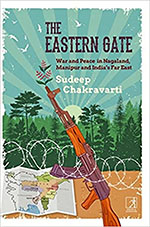
Sudeep Chakravarti
Located in a remote corner of India and, regrettably, the minds of most 'mainland' Indians, the N Eastern region has never been an easy site and space to think of, allow solitary write most. Immensely complex in terms of geography (territory), history, immigration and ethnic limerick, economic science and politics, the Northward East, which Sudeep Chakravarti quite correctly rechristens every bit (India'south) Far East, emerged out of the subcontinental decolonization procedure
Reviewed past: Nabanipa Bhattacharjee
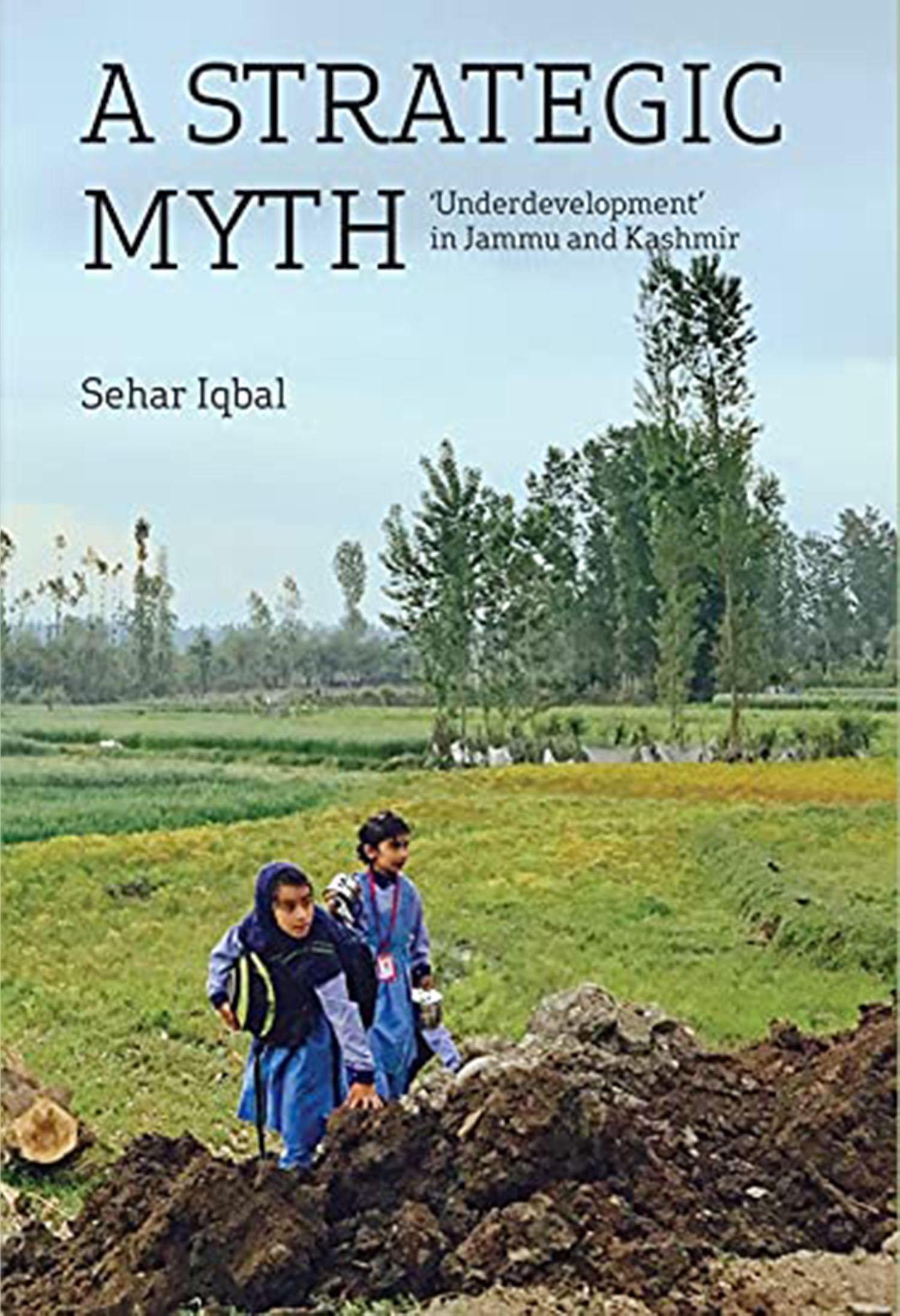
Sehar Iqbal
One of the arguments put forward for the abrogation of the special status of Jammu and Kashmir (J&Grand) nether Article 370 in August 2019 past the Central Authorities was that it hampered evolution in the erstwhile Land. This 'underdevelopment' narrative was stressed vehemently by the ruling political party at the centre at that time.
Reviewed by: Waqas Farooq Kuttay
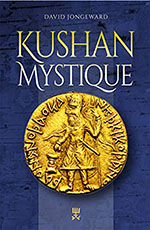
David Jongeward
A story of many sojourns, Kushan Mystique is a narrative of a cultural anthropologist David Jongeward who got attracted to Kushan history and Gandharan art and adult the symptoms of 'Kushanitis'. Now what is this 'Kushanitis'? In a delightful foreword, Joe Cribb, formerly of the British Museum, explains this term by saying that it is a condition of listen which afflicts a person and spreads easily when one comes into straight contact with the puzzle of the Kushan kings.
Reviewed by: Suchandra Ghosh
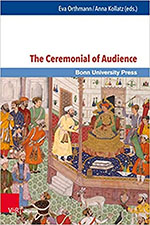
by Eva Orthmann, Anna Kollatz
For quite a long fourth dimension now, highly interesting fields of inquiry such as the early mod courtly audience, had been disregarded, being considered as a crucial role of classical diplomatic history and hence a flagship of antiquated and Eurocentric historiographical inquiry. Merely cheers to the development of new theoretical approaches such as global history, postcolonial studies, and the 'New Diplomatic History', the ladylike audience has emerged as an extremely fruitful field of enquiry, as numerous publications in contempo years take shown.
Reviewed by: Tilmann Kulke
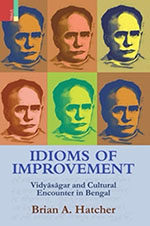
Brian A. Hatcher
26th September 2020 marked the 200th birth anniversary of Ishwarchandra Vidyasagar, one of the prominent figures in Bengal Renaissance. A prolific author, his works are considered to be 'classics' in gimmicky times. Vidyasagar'south writings are an of import source to discern the evolution of ideas, thoughts, and practices in Bengal.
Reviewed by: Oly Roy
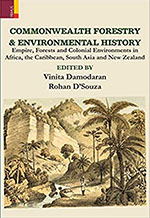
Vinita Damodaran and Rohan D'Souza
The book under review presents a crucial framework to understand environmental issues at a comprehensive and global level. It underlines that it is imperative to reconsider the centrality of the nation-state equally the basic unit of studying environmental changes, and it is necessary to movement beyond that as the unit of analysis. In other words, the volume represents the idea of writing environmental histories every bit a 'nature without borders'.
Reviewed by: Kamal Nayan Choubey
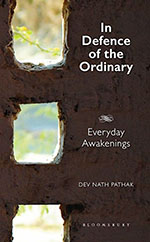
Dev Nath Pathak
Dev Nath Pathak's In Defence of the Ordinary: Everyday Awakenings is an inordinary demonstration of a routine practise that almost sociologists, certainly in their professional lives, claim an association with: sociological imagination. Pathak as well informs us well-nigh the deep connections between his personal and the public simply his concerns are routed in assuringly different ways. Indulging in a polemic confronting himself, the author invites his readers to undertake a not-so-usual reading of politics and philosophy of knowledge.
Reviewed by: Irfanullah Farooqi
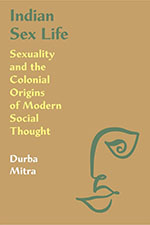
Durba Mitra
At that place is no gainsaying that violence has been instrumental in creating and shaping societies. Less attention has been paid to shame and guilt—emotions that rarely show upwards in discussions on politics and social club. Durba Mitra places these ideas forepart and centre in her devastating explication of the history of the linkages betwixt notions of sexuality and their touch on on the evolution of social thought in colonial Bharat.
Reviewed by: Sucharita Sengupta
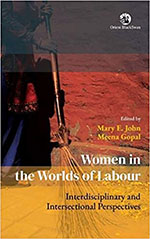
Mary Eastward. John and Meena Gopal
The question of women's labour has been central to about women's studies classrooms across the world.The volume edited by Mary EJohn and Meena Gopal is pathbreaking because it takes the question of women's labour out of the confines of traditional women's studies by adopting an interdisciplinary and intersectional perspective. The volume opens with a department that is almost akin to a masterclass on the issues of women and labour in Bharat in specific, accompanied past a very exhaustive discussion of the shifting theoretical paradigms, scholarly debates and literature review.
Reviewed by: Krishna Menon
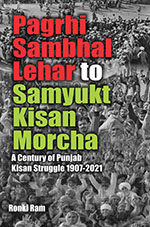
Ronki Ram
The book under review focuses on the recent farmers movement that lasted for one and half years and concluded only when the Wedlock Regime withdrew the three farm laws confronting which the farmers had put up a peaceful resistance, ensconced on the borders of the national capital territory of Delhi. The movement led the farmers' unions to class their own party (Samyukt Kisan Morcha) in Punjab and enter into the electoral arena.
Reviewed by: Ashutosh Kumar
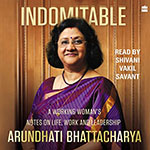
Arundhati Bhattacharya. Read by Shivani Vakil Savant
Arundhati Bhattacharya's memoir has a literary flavour, mixing personal elements with the professional person admirably. Merely information technology is distinctive in the way her experiences have been articulated from the perspective of a 'working adult female'. And this feat she accomplishes with elan, making her reflections a readable treat and compelling to empathize with.To brainstorm with, information technology is a story of a girl growing up at Bhilai and Bokaro and and so in Kolkata for higher studies before joining the wider world of professional banking.
Reviewed by: Amitabha Bhattacharya
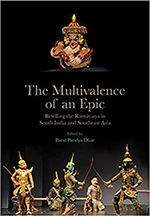
Parul Pandya Dhar
This beautifully produced book brings together twenty various essays (including the excellent introduction) on the Ramayana tradition in visual, literary and functioning cultures across a broad geographical swathe and across more than a millennium.In her careful test of Ramayana-themed sculptures in the Chalukya and Hoysala period temples of Karnataka, Parul Pandya Dhar shows that the image of Rama every bit ideal ruler is seen from inscriptions of the 6th century onwards where kings are compared to the divine hero. Interestingly, the nobler aspects of Ravana are also occasionally represented.
Reviewed by: Bharati Jagannathan
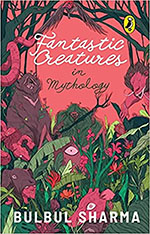
Bulbul Sharma
Children present are exposed to a wide variety of mythological stories from around the globe, and so have become quite familiar with the creatures studding these stories. Whether it is the poisonous basilisk from the Harry Potter stories, the manticore and cyclops from the Percy Jackson books and movies, or dragons from any number of books and movies, children have abundant access to stories near western mythological beasts.
Reviewed past: Sharad Raghavan
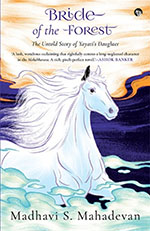
Madhavi S. Mahadevan
Madhavi Mahadevan presents to us the tale of Drishadvati, an illegitimate princess born of Yayati, the philandering Suryavanshi king of Hastinapur. She is blessed (or cursed?) with a volume—that she would sire four kings. Drishadvati, it was prophesied, was also 'blessed' such that she would regain her virginity after every birth. This benefaction made her the coveted prize of her times.
Reviewed by: Arunima Hakhu
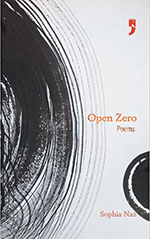
Sophia Naz
In October of 2017 California's raging wildfires burnt down Sophia Naz's home, taking everything, heirlooms, paintings, signed books, inter alia treasures, carelessly strewn around homes that bear witness to living—family photographs, handwritten journals, 'the material history of a lifetime'. Her 2021 collection of poems, Open Nix is less a math of that uncountable loss, or its archiving—for its calculus, as the obliquely eponymous poem 'After, math', muses, 'must be left at memory'due south table'. The poems here map the burn'south aftermaths—of all that follows the event of loss.
Reviewed by: Rina Ramdev
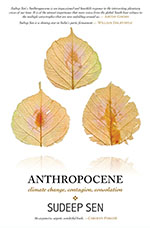
Sudeep Sen
With the arrival of his new collection, Anthropocene, a multi-genre book of poetry, literary prose and photography—Sudeep Sen takes a vertical plunge into deep history. From being a poet of Distracted Geographies, he now ventures to exist a poet of distracted geologies and its sedimented pasts. If in his earlier major collection Fractals, he could be seen traversing across ravaged war zones from Kargil to Gaza to trace remnants of life—in this latest book, the entire planet with its disoriented seas, skies, seasons and sites, becomes his theatre of concern.
Reviewed by: Akshaya Kumar
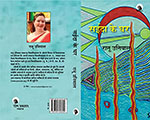
Ranu Uniyal
Ranu Uniyal, a teacher of English, is hither with her latest anthology of poems, in Hindi. Her poems, which she dismissively says are 'but things I wrote', are something of a portfolio of a traditional creative person, shy and balmy mannered, but with the promise of high artistry and an unfaltering grasp on her fabric and tools.There are poems about the different stages of womanhood, life in the streets (and within the mind), passing seasons, and of grade the landscape of the heart. In her wide sweep of ideas, she reminds one of the nineteenth century Urdu/Rekhta masters who left us literal biographies of their towns—local and universal at the same time.
Reviewed by: Madhu B Joshi
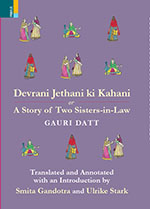
Gauri Datt. Translated and Annotated with an Introduction by Smita Gandotra and Ulrike Stark
Devrani Jethani ki Kahani, first published in 1870, is oft hailed equally the first novel in Hindi, and this critical edition, with the first-always translation into English as A Story of Two Sisters-in-Law, takes total cognizance of the book'due south historical significance to bring information technology to a gimmicky reader in all its layered complexity. The family saga marks a tryst with modernity against the backdrop of the colonial encounter, while offering a realist/reformist representation of the textures of Agarwal-Baniya community life around the Meerut region in the 1860s.
Reviewed by: Maya Joshi
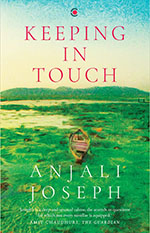
Anjali Joseph
Keeping in Touch past laurels-winning novelist Anjali Joseph is a beloved story centering Keteki Sharma and Ved Ved, two 30-something individuals more or less settled in their hectic, jet-set lives. Though it is dear at first sight for Ved, when he sees Keteki at Heathrow Aerodrome in casual jeans and shirt, Keteki revels in her relationship with her new lover only takes her time making up her mind nigh settling down with him. Thus begins a dance of a relationship between two individuals entirely unknown to each other.
Reviewed by: Fatima Rizvi
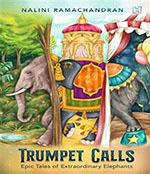
Nalini Ramachandran. Illustrations past Annushka Hardikar
Trumpet Calls: Epic Tales of Extraordinary Elephants by Nalini Ramachandran is divided into nine capacity beginning with 'What is an Elephant' and ending with 'The Keepers of Retentivity'. Each affiliate has a short introduction to the theme in focus, a short 'ele-fact' i.e., facts about the elephants and boosted information which is continued to the chief story. The black and white illustrations are bonny primarily due to sketches and drawings by Annushka Hardikar.
Reviewed by: Mahendra Vyas
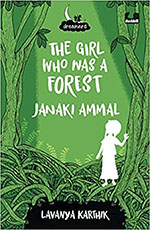
Lavanya Karthik
Young readers and budding artists will be entranced by the cute illustrations that hit you equally before long as you open up The Daughter who was a Wood: Janaki Ammal by Lavanya Karthik. The words have been called with intendance and are as intense and deep as they are few. It is a book for all historic period groups with the illustrations being an endearing, additional pull gene.
Reviewed past: Jyothi Malhotra
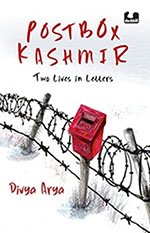
Divya Arya
These are words from Saumya's terminal letter to Duaa in the book Postbox Kashmir. This is a not-fiction volume holding xvi cursory yet substantial letters between the ii girls. The letters are strung together by Divya Arya giving elaborate historical details of events in and around Kashmir and references related to discussions that happen between the pen pals.
Reviewed by: Manika Kukreja
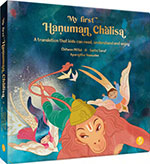
Chitwan Mittal and Sarita Saraf. Illustrated by Aparajitha Vaasudev
It is not unusual to hear children of all age groups chanting the Hanuman Chalisa. They acquire to dirge information technology with ease from their elders because of a magical lilt in the lyrics and a charm most the linguistic communication known every bit Awadhi, a dialect of Hindi.In My First Hanuman Chalisa, the authors and the illustrator take remarked in the opening pages that they were taught the 40 verses of the Chalisa by grandparents or parents.
Reviewed by: Indira Ananthakrishnan
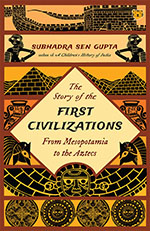
Subhadra Sen Gupta. Illustrated past Devashish Verma
The volume begins with a comprehensive overview and a strong introduction to why we should understand what went into making our nowadays. Subhadra Sen Gupta, in her inimitable style, takes usa on a journey around the world and offers a swell many nuggets of information most the globe'south primeval civilizations. Nosotros read well-nigh the Egyptian rulers who congenital lavish tombs for their afterlife
Reviewed by: Aakangshika Dutta
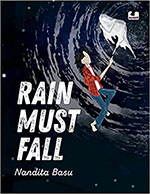
Nandita Basu
With the onset of adolescence, girls and boys are pressured to conform to socially sanctioned gender roles. They are expected to follow the gender norms and practices that a particular club has prepare. The problem arises when children develop a gender identity that is set against a club'southward expectation. In that location are cultures that are more fluid only there are many which discriminate against non-binary individuals because of stereotypes and misinformation.
Reviewed past: Sushmita Ghosh
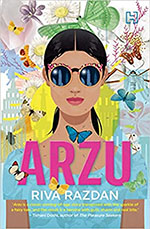
Riva Razdan
Arzu is essentially a coming-of-age story but the beauty of the book lies in the fact that it is able to beautifully capture the process of growth, change and hard work, which tin can be tremendously difficult to write about in an interesting style. Arzu'south efforts to develop herself and find her identify in the world are inspiring, especially for young readers who are trying to figure themselves out.
Reviewed by: Ilika Trivedi
phillipslegreasing.blogspot.com
Source: https://www.thebookreviewindia.org/
0 Response to "How to Apply Times of India for Book Review"
Post a Comment